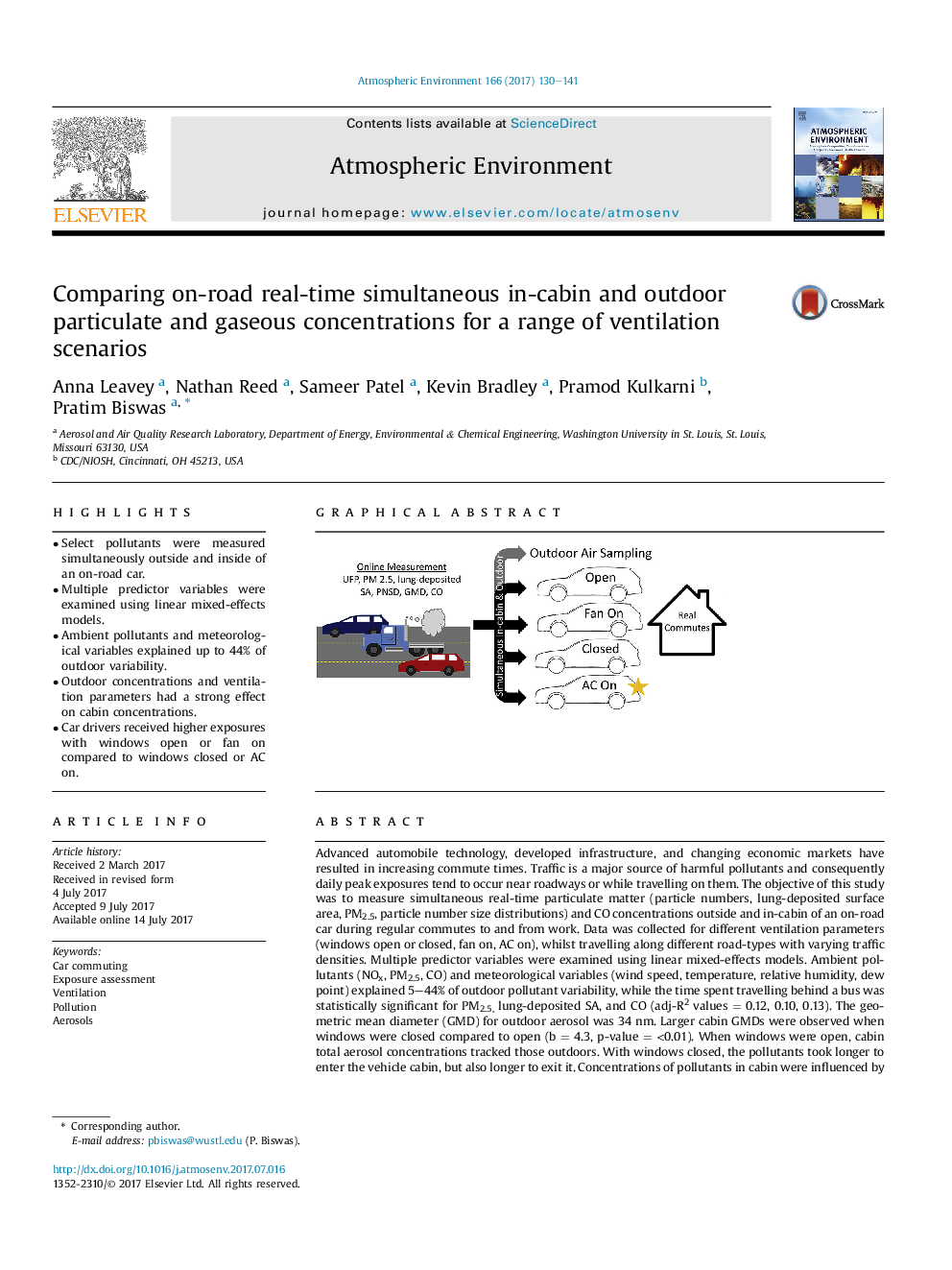| کد مقاله | کد نشریه | سال انتشار | مقاله انگلیسی | نسخه تمام متن |
|---|---|---|---|---|
| 5752838 | 1620308 | 2017 | 12 صفحه PDF | دانلود رایگان |
- Select pollutants were measured simultaneously outside and inside of an on-road car.
- Multiple predictor variables were examined using linear mixed-effects models.
- Ambient pollutants and meteorological variables explained up to 44% of outdoor variability.
- Outdoor concentrations and ventilation parameters had a strong effect on cabin concentrations.
- Car drivers received higher exposures with windows open or fan on compared to windows closed or AC on.
Advanced automobile technology, developed infrastructure, and changing economic markets have resulted in increasing commute times. Traffic is a major source of harmful pollutants and consequently daily peak exposures tend to occur near roadways or while travelling on them. The objective of this study was to measure simultaneous real-time particulate matter (particle numbers, lung-deposited surface area, PM2.5, particle number size distributions) and CO concentrations outside and in-cabin of an on-road car during regular commutes to and from work. Data was collected for different ventilation parameters (windows open or closed, fan on, AC on), whilst travelling along different road-types with varying traffic densities. Multiple predictor variables were examined using linear mixed-effects models. Ambient pollutants (NOx, PM2.5, CO) and meteorological variables (wind speed, temperature, relative humidity, dew point) explained 5-44% of outdoor pollutant variability, while the time spent travelling behind a bus was statistically significant for PM2.5, lung-deposited SA, and CO (adj-R2 values = 0.12, 0.10, 0.13). The geometric mean diameter (GMD) for outdoor aerosol was 34 nm. Larger cabin GMDs were observed when windows were closed compared to open (b = 4.3, p-value = <0.01). When windows were open, cabin total aerosol concentrations tracked those outdoors. With windows closed, the pollutants took longer to enter the vehicle cabin, but also longer to exit it. Concentrations of pollutants in cabin were influenced by outdoor concentrations, ambient temperature, and the window/ventilation parameters. As expected, particle number concentrations were impacted the most by changes to window position/ventilation, and PM2.5 the least. Car drivers can expect their highest exposures when driving with windows open or the fan on, and their lowest exposures during windows closed or the AC on. Final linear mixed-effects models could explain between 88 and 97% of cabin pollutant concentration variability. An individual may control their commuting exposure by applying dynamic behavior modification to adapt to changing pollutant scenarios.
219
Journal: Atmospheric Environment - Volume 166, October 2017, Pages 130-141
